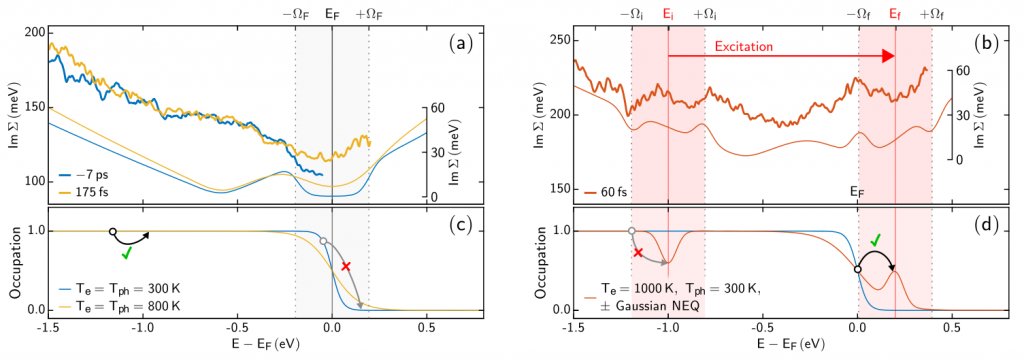This website uses cookies to ensure a better user experience.
To get more information, please read our Cookie Statement.
Far-from-Equilibrium Electron–Phonon Interactions in Optically Excited Graphene
Our colleague Dino Novko, in collaboration with scientists from Georg-August-Universität Göttingen, has published a paper in Nano Letters, in which they explore novel femtosecond many-body electron-phonon features in photo-excited graphene.
Far-from-Equilibrium Electron–Phonon Interactions in Optically Excited Graphene
Marten Düvel, Marco Merboldt, Jan Philipp Bange, Hannah Strauch, Michael Stellbrink, Klaus Pierz, Hans Werner Schumacher, Davood Momeni, Daniel Steil, G. S. Matthijs Jansen, Sabine Steil, Dino Novko, Stefan Mathias, and Marcel Reutzel, Nano Letters 22, 4897 (2022).
DOI: 10.1021/acs.nanolett.2c01325
Comprehending far-from-equilibrium many-body interactions is one of the major goals of current ultrafast condensed matter physics research. Here, a particularly interesting but barely understood situation occurs during a strong optical excitation, where the electron and phonon systems can be significantly perturbed and the quasiparticle distributions cannot be described with equilibrium functions. In this work, we use time- and angle-resolved photoelectron spectroscopy to study such far-from-equilibrium many-body interactions for the prototypical material graphene. In accordance with theoretical simulations, we find remarkable transient renormalizations of the quasiparticle self-energy caused by the photoinduced nonequilibrium conditions. These observations can be understood by ultrafast scatterings between nonequilibrium electrons and strongly coupled optical phonons, which signify the crucial role of ultrafast nonequilibrium dynamics on many-body interactions. Our results advance the understanding of many-body physics in extreme conditions, which is important for any endeavor to optically manipulate or create non-equilibrium states of matter.

Fig. 1 Comparison of nonequilibrium many-body interactions in experiment and theory. (a) Imaginary part of electron self-energy Im(Σ) as a function of energy for thermalized electron distributions at -7ps with electron and phonon temperatures of Te = Tph = 300K (thick blue line: experiment, thin blue line: theory) and at 175fs with elevated temperatures of ~800 K (thick yellow line: experiment, thin yellow line: theory). (b) Im(Σ) as a function of energy for a delay of 60fs, where the electron system exhibits a strong non Fermi−Dirac nonequilibrium distribution (thick red line: experiment, thin red line: theory). (c,d) Electron distribution functions and schemes of possible electron−phonon scattering processes in the case of equilibrium Fermi−Dirac distributions, (c), and strong non-Fermi−Dirac nonequilibrium distributions (d).




